A legnépszerűbb alkalmazások biztonságos üzemmóddal rendelkeznek, amely lehetővé teszi a felhasználók számára, hogy korlátozott funkcionalitással futtassák a programot, ha a dolgok nem úgy működnek, ahogy kellene. Ilyen például az Outlook - egy összetett e-mail kezelő, amely a Csökkentett módot használja sok olyan probléma megkerülésére, amelyek megakadályozzák az indítását. Előfordulhat, hogy szándékosan indítja az Outlookot csökkentett módban, de önállóan is elindulhat ebben a módban.

Kivéve, ha bármilyen okból maga kezdeményezte a csökkentett módot , nem javasoljuk, hogy továbbra is használja az Outlookot ebben a módban. Nem fog tudni sablonokat, beállításokat menteni, és nem használhatja többek között az intelligens címkéket sem. Ha ilyen helyzetben van, javasoljuk, hogy a Csökkentett módot kezelje diagnosztikai eszközként, és oldja meg a problémát.
Mikor használja a Biztonságos módot az OutLook alkalmazásban
Az Outlook rendszeresen frissíti a rendszerleíró adatbázist, hogy a telepített új bővítmények megfelelően működjenek. Ha a program az indításkor olyan problémát észlel, amely megakadályozza annak futtatását, automatikusan csökkentett módba kapcsol . Ez általában közvetlenül egy új kiegészítő telepítése után történik, amely nem játszik jól az Outlook verziójával.
Ön kiválthatja a csökkentett módot, ha megnyit egy Futtatás ablakot, beírja az Outlook / safe parancsot, és megüt az OK gombra .

Abban az esetben, ha az Outlook automatikusan csökkentett módban indul , ez általában annak a jele, hogy valami nem működik megfelelően. Néha az Outlooknak sikerül pontosan meghatároznia a kiegészítő összetevőt, amely megakadályozza az Outlook normál indítását. Ha arra kéri, hogy tiltsa le a hibás összetevőt, próbálja ki, és ellenőrizze, hogy az Outlook rendesen elindul-e.

Potenciális csökkentett mód kiváltása
Ha a 2010-es verziót használja, akkor a problémát valószínűleg a KB3114409 frissítés okozza, amely miatt az Outlook csökkentett módban indul, és visszaáll az alapértelmezett beállításokra. Abban az esetben, ha régebbi Outlook verziót használ, például 2007 vagy 2003, a probléma valószínűleg a Windows keresési szolgáltatáshoz kapcsolódik . A rossz bővítmény ütközhet az Outlook verziójával is, addig, hogy kényszerítve legyen biztonságos módban való indításra .
Ez csak három a lehetséges bűnösök közül, de az okok sok helyről származhatnak.
Az alábbiakban egy olyan javítások gyűjteménye található, amelyek már sok felhasználónak segítettek megakadályozni az Outlook csökkentett módban való futtatását . Kövesse a fenti módszereket az Outlook verziójának megfelelő sorrendben, amíg meg nem találja a problémát megoldó javítást.
1. módszer: A bővítmények letiltása csökkentett módban (az összes Outlook verzió)
Ez az Outlook 2007- től az Outlook 2016- ig terjedő összes Outlook-verzió gyakori előfordulása . Ez azért történik, mert bizonyos bővítmények ütköznek az Outlook verziójával. Ez még valószínűbb, ha az Outlook legújabb verzióira telepített elavult bővítmények vannak.
Megjegyzés: Ha az ABBYY FineReader bővítményt még a hiba kezdete előtt telepítette , kövesse az alábbi lépéseket a bővítmény eltávolításához az Outlook verziójából.
- Ellenőrizze, hogy az Outlook csökkentett módban van-e, ellenőrizve, hogy a tálcán lévő ikon felkiáltójellel rendelkezik-e.

Megjegyzés: Megerősítheti azt is, ha megnézi, hogy a képernyő felső részén található-e (Csökkentett mód).

- Bontsa ki a Fájl fület, és kattintson az Opciók gombra .

- Most kattintson a Bővítmények fülre. Innen nyissa meg a Kezelés melletti legördülő menüt, és válassza a COM-bővítményeket a listából. Kattintson a Tovább gombra .
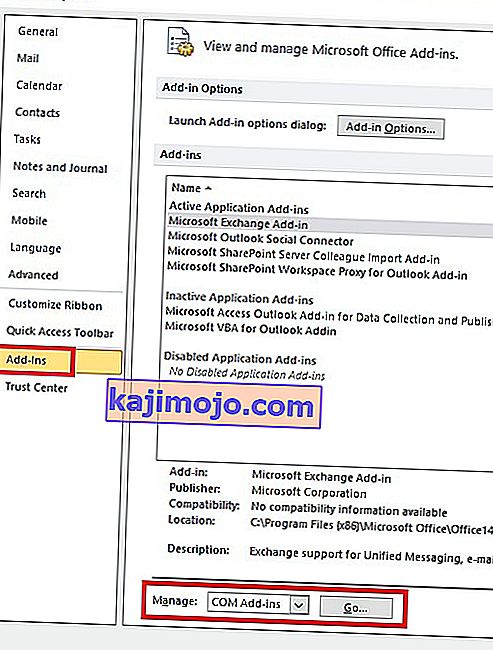
- Ekkor készítsen egy képernyőképet a bővítmények listájáról, és mentse el valahova, ahová össze lehet hívni. Ez segít az Outlook normál konfigurációjának helyreállításában, ha a bővítmények letiltása után bármilyen hiba lép fel.
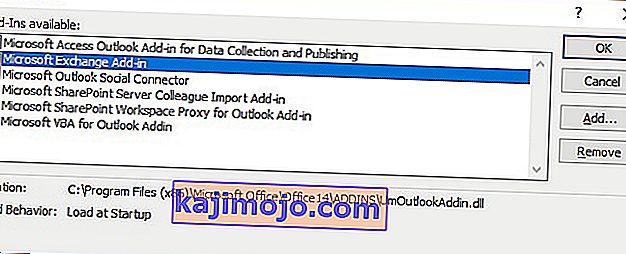
- Tiltsa le az egyes bejegyzéseket (törölje a kijelölt jelölőnégyzeteket), és nyomja meg az OK gombot .
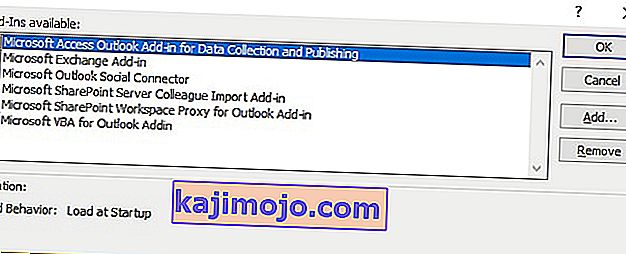 Megjegyzés: Még nem nyomja meg az Eltávolítás gombot . Először meg kell erősítenünk, hogy ők okozzák a problémát.
Megjegyzés: Még nem nyomja meg az Eltávolítás gombot . Először meg kell erősítenünk, hogy ők okozzák a problémát. - Zárja be az Outlook programot, és nyissa meg újra biztonsági másolatot. Ha a program normál módban indul, a probléma megoldódott.
Megjegyzés: Ha továbbra is csökkentett módban indul , lépjen a Fájlbeállítások> Bővítmények elemre, és engedélyezze újra az 5. lépésben letiltott bővítményeket, és lépjen a 2. módszerre .
- Térjen vissza a Fájl> Opció> Bővítmények elemre, és szisztematikusan engedélyezze egyes bővítményeket egyesével, amíg fel nem fedi az ütközéseket okozót.
- Jelölje ki, és nyomja meg az Eltávolítás gombot .
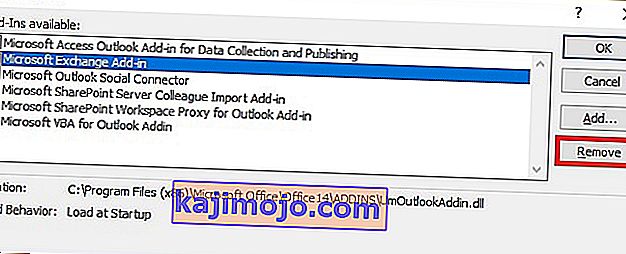
- Indítsa újra az Outlook programot, és nézze meg, hogy normál módban indul-e.
2. módszer: A számítógép visszaállítása a Rendszer-visszaállítás használatával (Minden Outlook verzió)
A rendszer-visszaállítás egy olyan Windows-szolgáltatás, amely lehetővé teszi a felhasználók számára, hogy számítógépük állapotát visszaállítsák egy korábbi időpontra. Ez a célunkat szolgálja, ha vissza tudunk térni egy olyan állapotba, amely megelőzi az Outlook hibás működését. A következőket kell tennie:
- Tartsa lenyomva a Windows kulcsot, és nyomja meg az R gombot. Írja be az rstrui.exe fájlt, és kattintson az OK gombra .
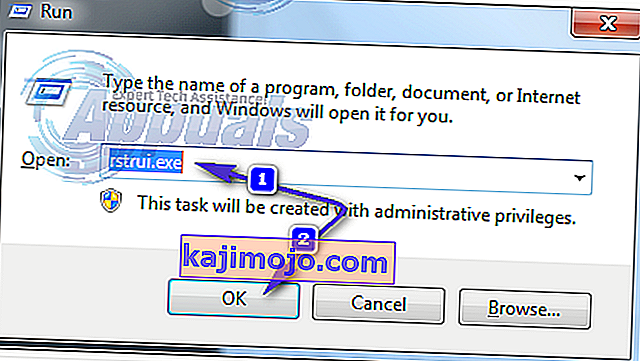
- A Rendszer-visszaállítás ablakban válassza a Válasszon másik visszaállítási pontot lehetőséget, majd nyomja meg a Tovább gombot.
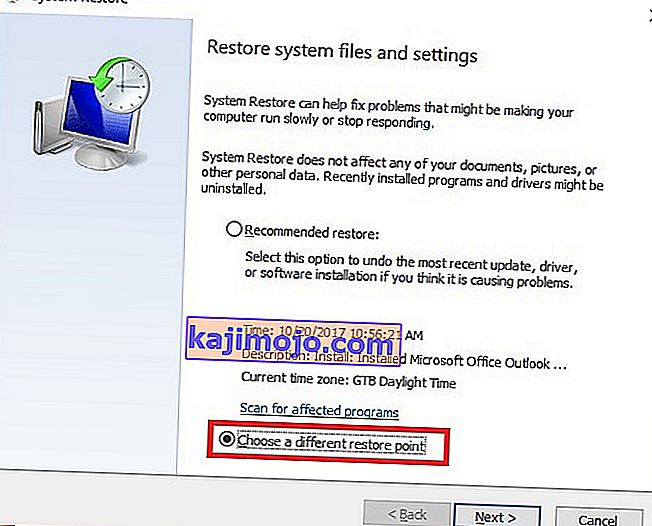
- Vastagítsa a négyzetet a További visszaállítási pontok megjelenítése mellett.
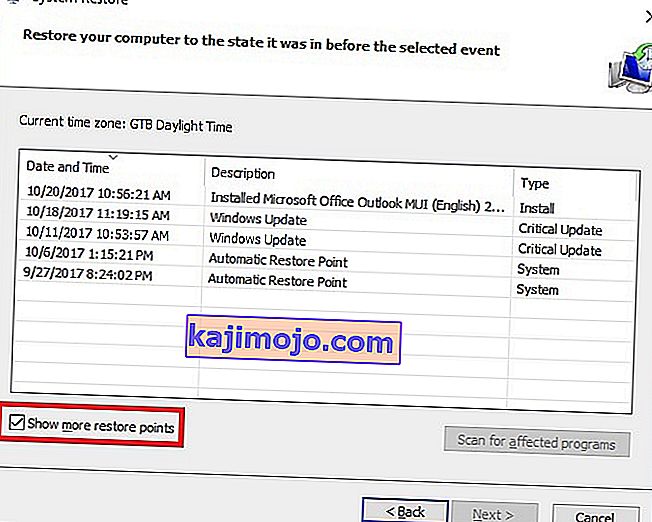
- Keressen meg egy olyan pontot, amikor az Outlook működött, majd válassza ki azt a helyreállítási pontot, és a képernyőn megjelenő utasításokkal folytassa a számítógép korábbi helyreállítását.
- Ha ez megtörtént, a rendszer megkezdi a helyreállítást. A visszaállítás befejezése után ellenőrizze, hogy működik-e az Outlook. ha nem, akkor folytassa a 3. módszerrel .
3. módszer: Visszaállítás az Outlook előző verziójára
Ha az asztali operációs rendszer korábbi verziójának visszaállítása nem működött, próbálkozzunk az Outlook korábbi verziójával. Itt van, hogyan:
- Kattintson a Start gombra, és írja be az Outlook.exe parancsot a keresési párbeszédpanelen. Kattintson a jobb gombbal rá, és válassza a Tulajdonságok parancsot .
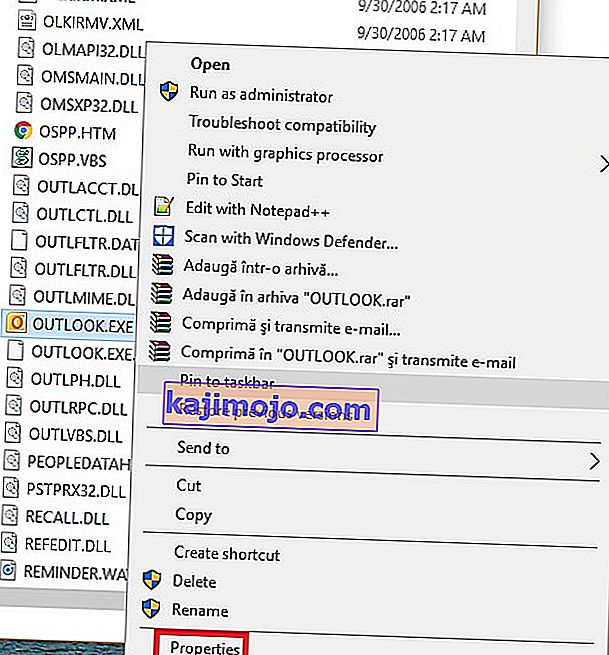
- Ezután lépjen a Korábbi verziók fülre, és keresse meg az Outlook.exe fájlt, amelynek dátuma van, amikor működött. Kattintson a Megnyitás gombra, hogy megnézze, működik-e és biztonságos mód nélkül is megnyílik-e .
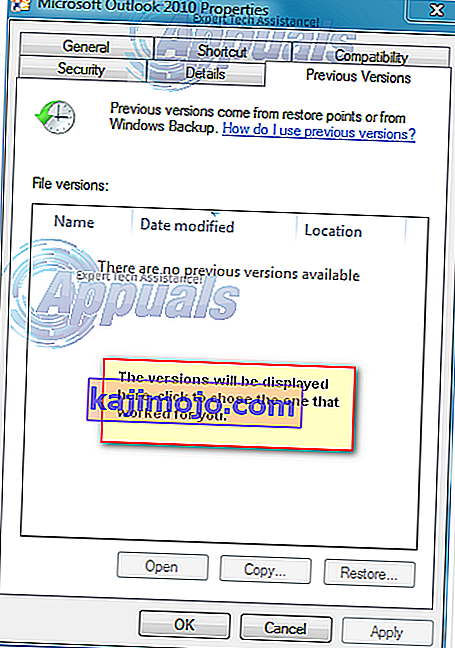 Megjegyzés: Győződjön meg róla, hogy a korábban csökkentett módban megnyílt nem működő Outlook be van zárva, mert most az előző verziókba mentett egyik példányt futtatjuk. Tegye ugyanezt az összes ott felsorolt verzió esetében. Nyissa meg / zárja be, amíg meg nem jelenik a biztonságos mód nélküli megnyitás. Ha működik, akkor tartsa nyitva az Ablakot.
Megjegyzés: Győződjön meg róla, hogy a korábban csökkentett módban megnyílt nem működő Outlook be van zárva, mert most az előző verziókba mentett egyik példányt futtatjuk. Tegye ugyanezt az összes ott felsorolt verzió esetében. Nyissa meg / zárja be, amíg meg nem jelenik a biztonságos mód nélküli megnyitás. Ha működik, akkor tartsa nyitva az Ablakot. - Feltételezve, hogy most már fut az Outlook verziója, a korábbi verziók egyikétől a csökkentett mód nélkül. Tartsa lenyomva a Windows billentyűt, és nyomja meg az R gombot . Írja be a taskmgr parancsot, és kattintson az OK gombra .
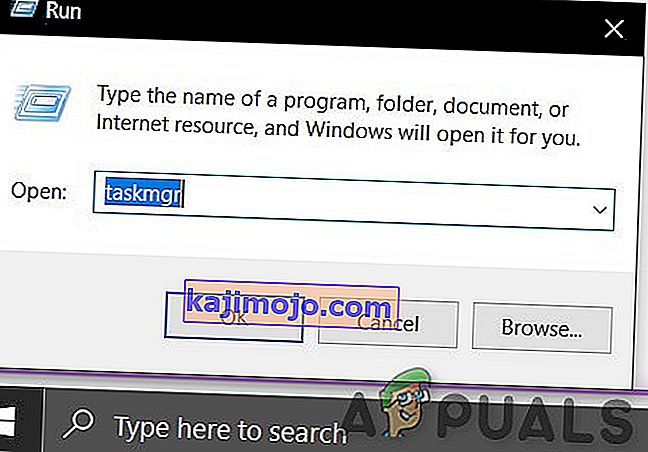
- A Feladatkezelő ablakban lépjen a Folyamat fülre, keresse meg az Outlook.exe fájlt, kattintson rá a jobb gombbal, és válassza a Fájl helyének megnyitása lehetőséget.
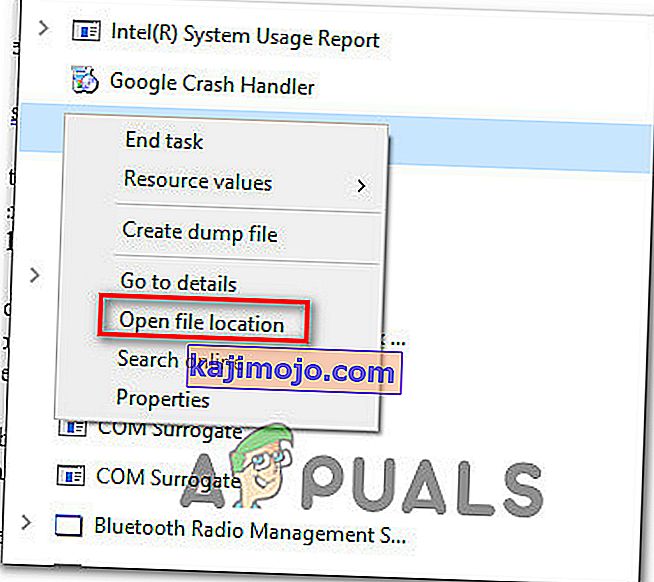
- Copy all the files from the next window, then navigate to C:\Program Files (x86)\Microsoft Office\Office. Paste the filed previously copied here.
- Try to re-open Outlook and see if it starts in normal mode.
Method 4: Uninstalling the KB3114409 update ( Outlook 2010)
Sometime in 2015, Microsoft issued a security patch that caused Outlook to run in Safe Mode and revert it back to the default configuration. The user-made configurations aren’t lost forever and will be back when Outlook manages to boot up in normal mode.
If you have this problem, there are two ways to proceed forward. Since Microsoft issued an update that fixes the problem caused by KB3114409, we can install that over the bad update. A different route would be to simply uninstall the KB3114409.
We highly recommend you to go for installing the official Microsoft update fix. But regardless of which option you opt for, we will guide you through the whole process.
Using the official Microsoft fix
Microsoft update KB3114560 was issued specifically to fix the damage done by KB3114409. As a rule of thumb, you should always install security updates from the official website. Here’s what you need to do:
- Access this official link and click on one of the two different update versions, according to your PC specs.
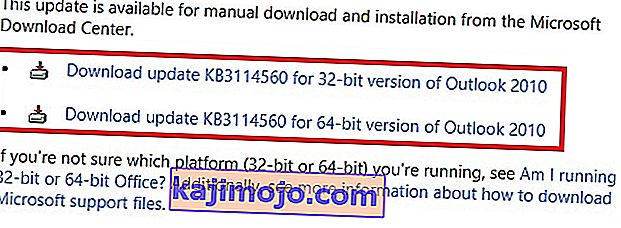
- Select the default language of your Outlook program and click on the Download button.
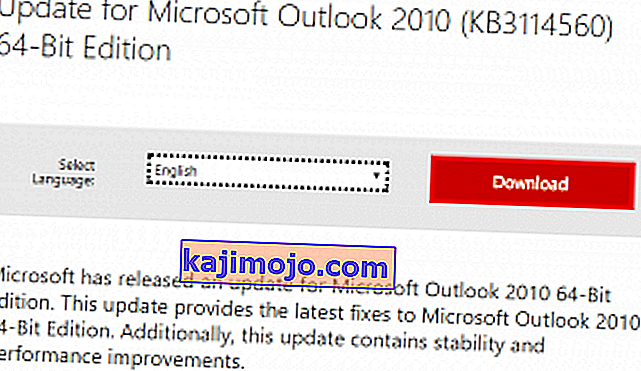
- Once the update has been downloaded, open the executable and follow through with the installation process.
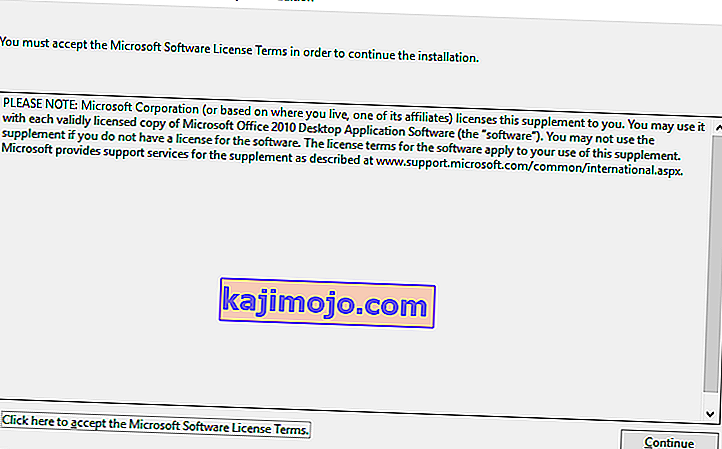
- Restart your PC, open Outlook again and see if the issue has been resolved.
Uninstalling the KB3114409 update
- Close Outlook completely.
- Open Control Panel, click on Uninstall a program.
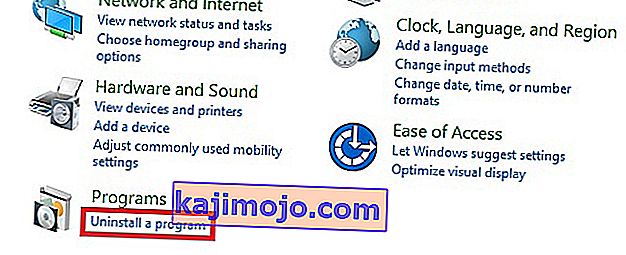
- Once you’re in the Programs and Features window, click on View installed updates.
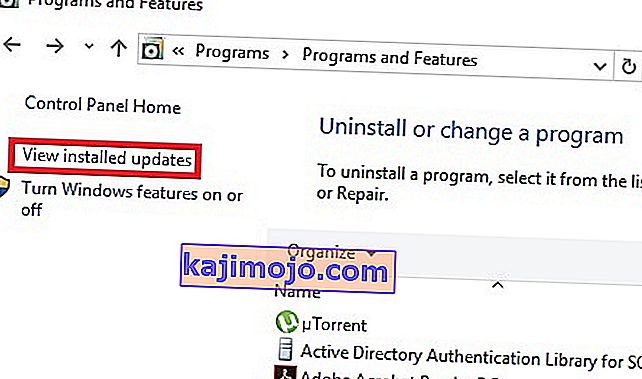
- Use the Search Installed Updates search bar in the top-right corner to search for the bad update (KB3114409 ).

- Once you manage to identify the bad update, click the Uninstall button and follow through with the confirmation prompts.
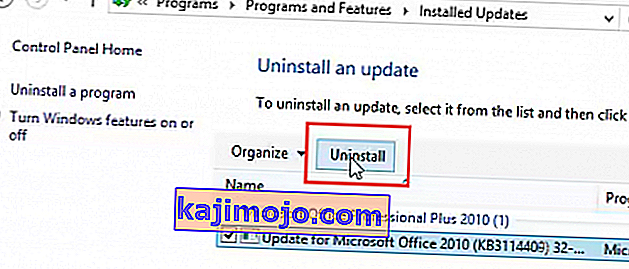
- Restart your PC, open Outlook and see if the issue repeats.
Method 5: Doing an Outlook Profile reset (All Outlook versions)
If you experience hanging at the initial Outlook splash screen (right before it initiates Safe Mode), you might need to do a profile reset. Here’s how to do it:
- Go to Control Panel > Mail and click on Show Profiles.
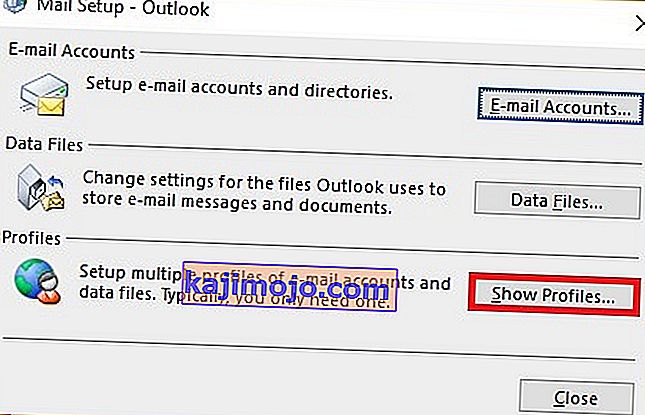
- Now, create a new profile by clicking the Add button. Insert a name and hit OK.
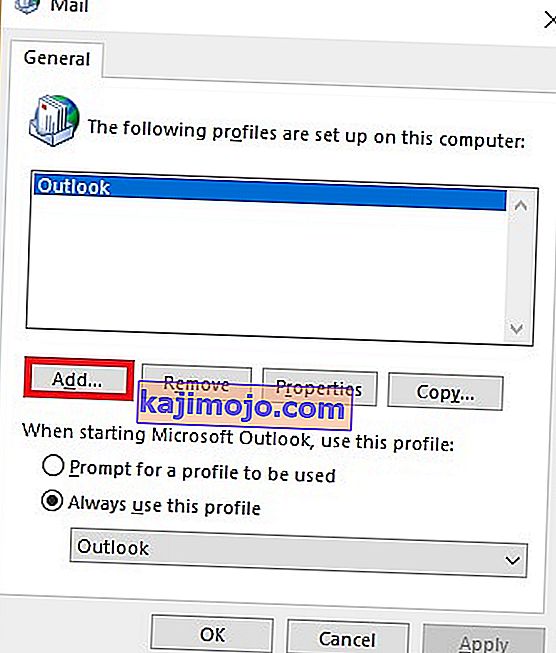
Note: Do not delete the original profile, because we don’t know if this will end up fixing the issue.
- Go through the steps of configuring your email account with Outlook. Make sure to use the same email that you have on the already created profile.
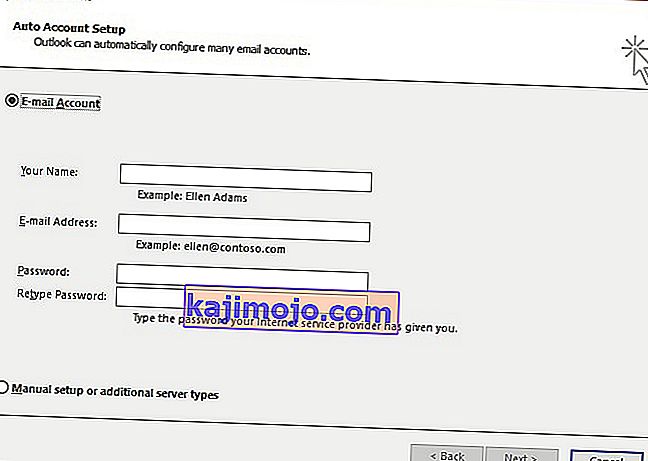
- Now return to the Mail window and make sure the profile you’ve just created is being used by default. Hit Apply to confirm your selection.
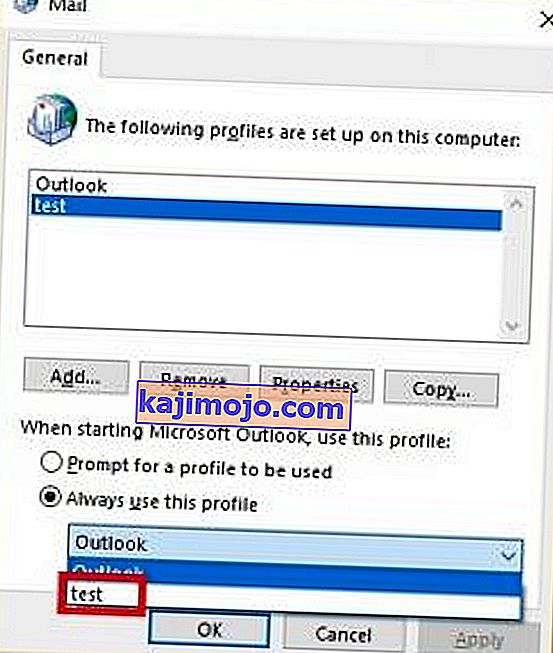
- Start Outlook again and see if it manages to start in normal mode after the profile reset.
Method 6: Checking the PST folder for corruption (All Outlook versions)
Another common cause for Outlook starting in Safe Mode is the Personal Folders File (PST). In the event that it becomes very large, or some files inside are corrupted, it might prevent the program from starting in normal mode. Luckily, you can easily check for corruption by using a Microsoft Repair tool called Scanpst.exe. Here’s what you need to do:
- Close Outlook completely and navigate to C:\ Program Files or C:\ Program Files (x86), depending on which version of Outlook you use.
- Use the search box in the top-right corner to search for SCANPST.exe.
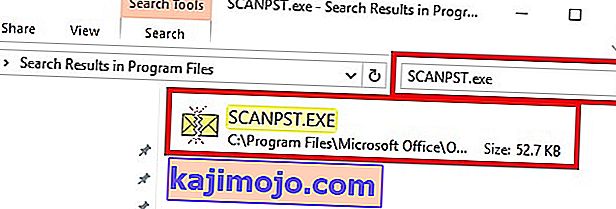 Note: If you don’t manage to find the SCANPST executable via the search bar, you need to navigate to the exact location. Here’s a list of the exact locations based on various Outlook versions:
Note: If you don’t manage to find the SCANPST executable via the search bar, you need to navigate to the exact location. Here’s a list of the exact locations based on various Outlook versions:2016: C:\Program Files (x86)\Microsoft Office\root\Office16 2013: C:\Program Files (x86)\Microsoft Office\Office15 2010: C:\Program Files (x86)\Microsoft Office\Office14 2007: C:\Program Files (x86)\Microsoft Office\Office12
- Open SCANPST.exe and set the path of the PST file you want to scan by using the Browse button. By default, the PST files are stored in Documents\Outlook Files. When you are ready, hit Start to begin the scan.
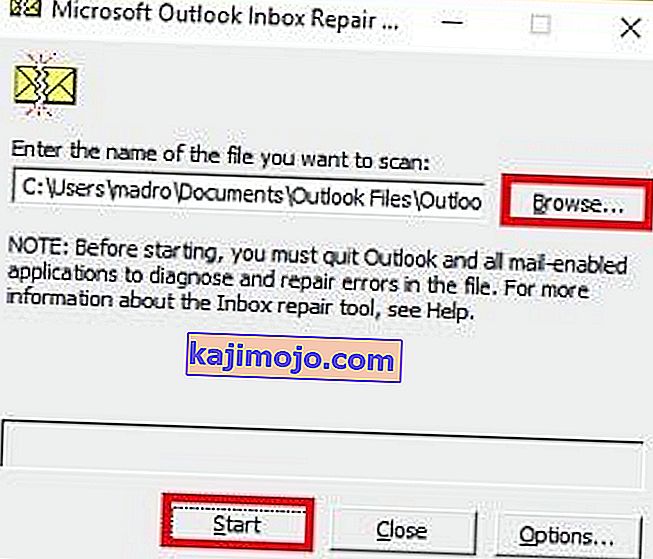
- If the scan uncovers errors or inconsistencies, click on the Repair button to fix them.
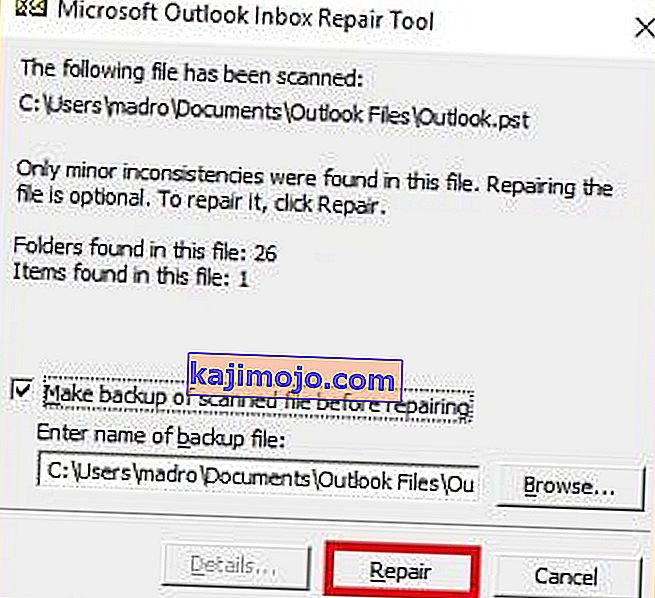
- Once the repair is done, restart Outlook with the profile that you’ve just repaired of errors and see if it starts in normal mode.
Method 7: Running the /resetnavpane command (All Outlook versions)
The navigation pane is that left portion of Outlook where you can oversee your folder list and access various icons to move between calendar, people, tasks, and mails. Sometimes, it can become glitched and prevent Outlook from starting in normal mode. Luckily, there is a command that removes any customizations to the navigation pane and gets rid of any glitch. Even better, this is done outside Outlook with ease. Here’s how:
- Close Outlook completely.
- Go to Start and access the Run application.
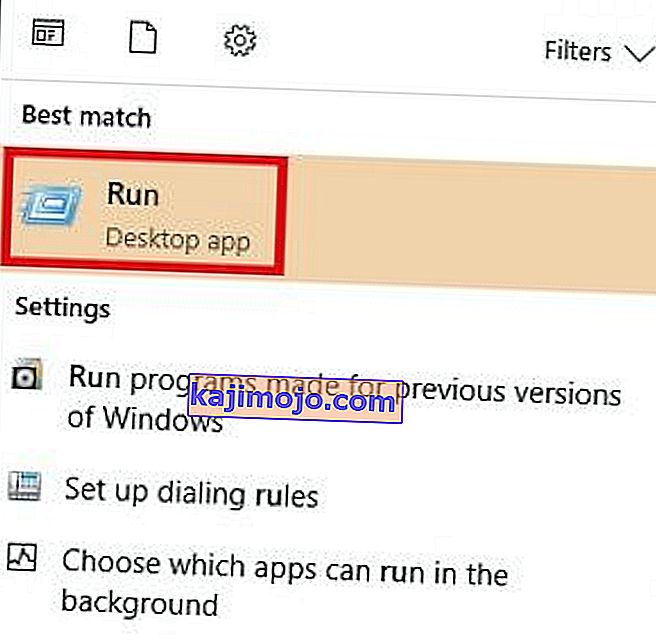
- Now, type Outlook.exe /resetnavpaneand hit OK.
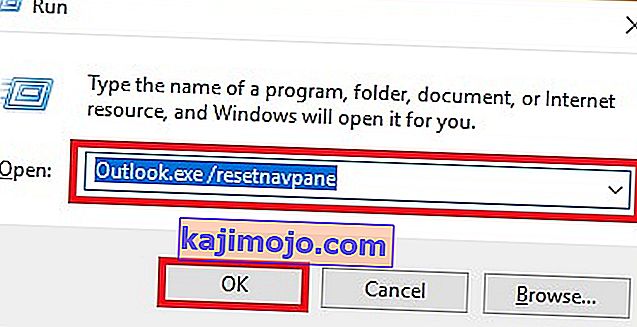 Note: Keep in mind that any customization to the navigation pane will be lost after you click on OK.
Note: Keep in mind that any customization to the navigation pane will be lost after you click on OK. - Shortly after, Outlook should automatically open in normal mode.
Method 8: Disabling compatibility mode
A lot of users have reported that they managed to start Outlook in normal mode after finding out it was running in compatibility mode. Compatibility mode is designed to help a program run as if it was running on an older operating system. As it turns out, turning off compatibility mode might just fix your Outlook Safe Mode problem. Here’s how:
- Close Outlook and navigate to the Outlook.exe on your computer. The exact path of it will differ, depending on your Outlook version. Here’s a list of the exact paths depending on your Outlook version:
2016 - C:\Program Files (x86)\Microsoft Office\root\Office16 2013 - C:\Program Files (x86)\Microsoft Office\Office 15 2010 - C:\Program Files (x86)\Microsoft Office\Office 14 2007: C:\Program Files (x86)\Microsoft Office\Office12

- Right-click on Outlook.exe and click on Properties.
- Now click on the Compatibility tab and make sure the box directly under Compatibility Mode is unchecked. Hit Apply to confirm your selection.
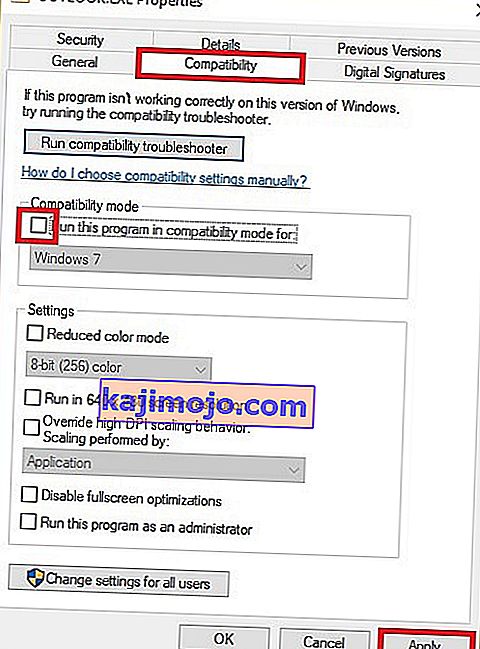
- Finally, open Outlook from the same Outlook executable and see if it manages to start in normal mode.
Method 9: Disabling hardware acceleration (All Outlook versions)
As it turns out, Outlook tries to use hardware acceleration whenever it can to make things as seamless as possible. If you’re Outlook forces itself into Safe Mode, it could very well be an issue with hardware acceleration. We can check to see if that’s the case by making some minor tweaks inside regedit. Here’s how:
- Go to Start and open the Run application.
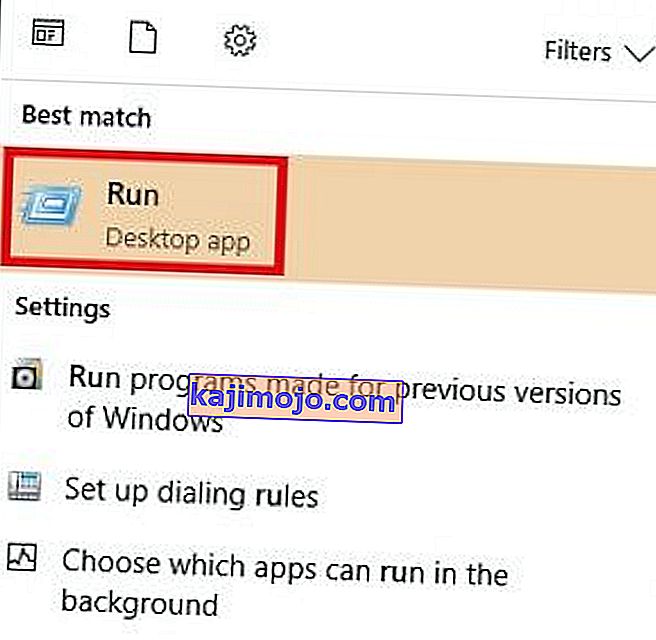
- Search for regedit and click OK to open the Registry Editor.
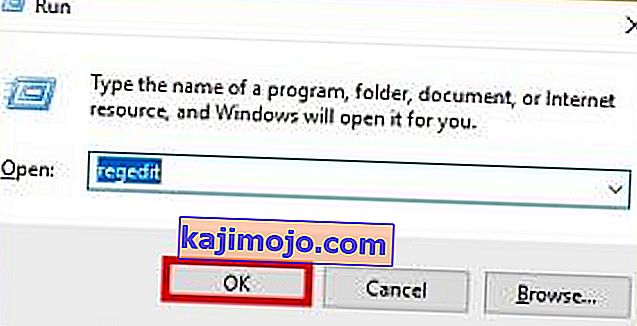
- Navigate your way to the following location
HKEY_CURRENT_USER\ Software\ Microsoft\ Office.
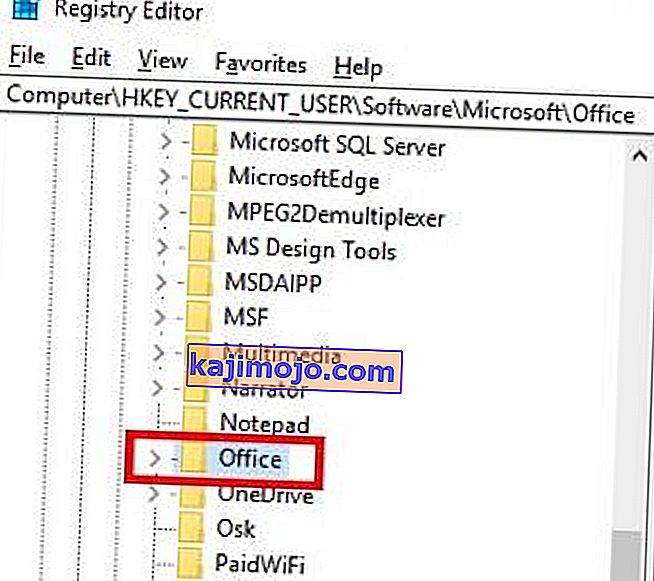
- Now, depending on which Outlook version you have, you might encounter different folders. You should either see a folder named 14.0, 16.0 or 8.0. Either way, click on the folder and double-click on the Common folder.
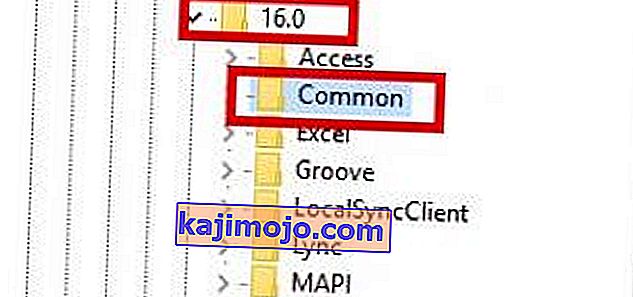
- Right-click anywhere in the Common folder, select New and click on Key and name it Graphics.
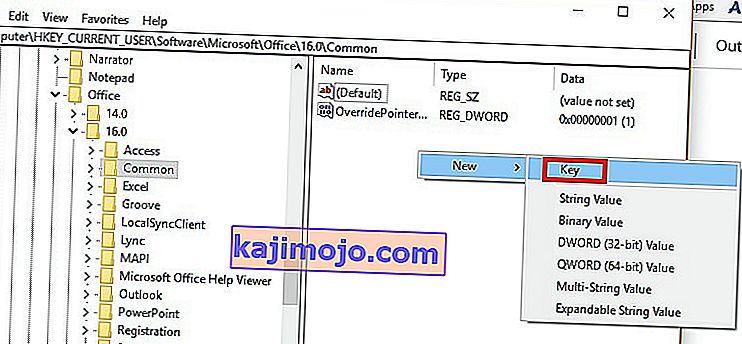
- Select the newly created Graphics folder and right-click on the right panel. From there, create a New Dword (32-bit) Value and name it DisableHardwareAcceleration.
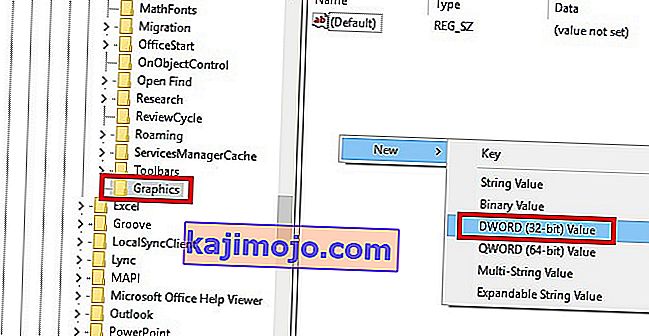
- Now double-click on DisableHardwareAcceleration and set the Value Data to 1 and hit Ok.
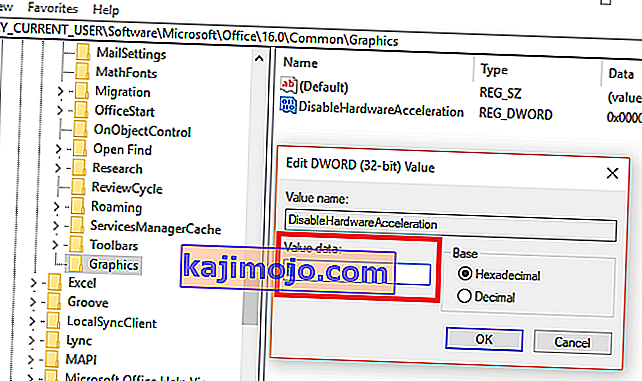
- Close regedit and open Outlook again to see if it starts in normal mode.
Method 10: Resetting the Safe Mode Registry Key (Outlook 2010)
If you have unsuccessfully followed all the methods above, there’s one more thing you can try. A final solution would be to try and prevent Safe Mode from kicking in by tweaking the registry key. But keep in mind that after you’ll follow the steps below, you won’t be able to use Safe mode in the future. At least not until you remove the key that we will create. Here’s what you need to do:
- Go to Start and open the Run application.

- Search for regedit and click OK.

- Navigate your way through HKEY_CURRENT_USER\ Software\ Microsoft\ Office.

- Now, depending on which Outlook version you have, you might encounter different folders. You should either see a folder named 14.0, 16.0 or 8.0. Either way, click on the folder navigate further to Outlook \ Security.
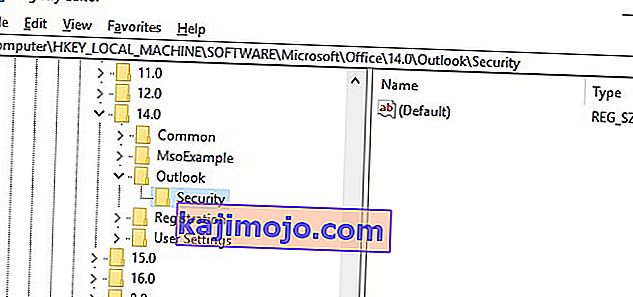 Note: If the Security folder is missing, Right-click > New > Key and type Security.
Note: If the Security folder is missing, Right-click > New > Key and type Security. - Right-click on the Security key and choose New > then DWORD (32-bit) Value.
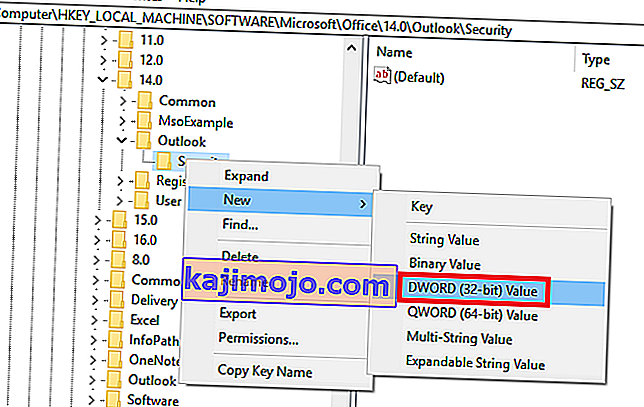
- Name it DisableSafeMode and press Enter to confirm.
- Right-click on DisableSafeMode and click on Modify.
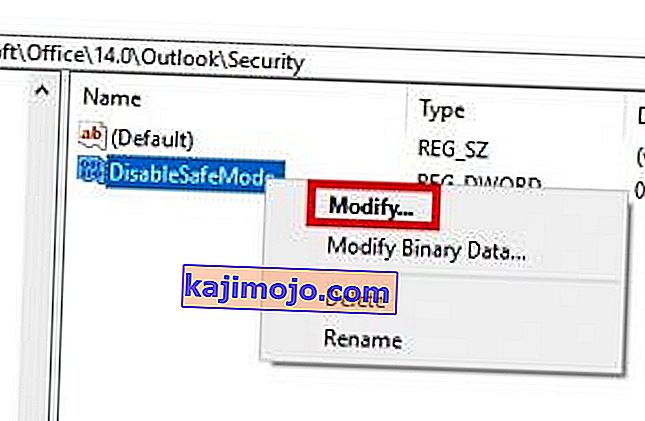
- Helyezze be az 1 értéket az Érték mezőbe, és kattintson az OK gombra .

- Zárja be a Beállításszerkesztőt, és indítsa újra a számítógépet.
- Nyissa meg az Outlook programot, és nézze meg, hogy normál módban indul-e.






 Megjegyzés: Még nem nyomja meg az Eltávolítás gombot . Először meg kell erősítenünk, hogy ők okozzák a problémát.
Megjegyzés: Még nem nyomja meg az Eltávolítás gombot . Először meg kell erősítenünk, hogy ők okozzák a problémát.




 Megjegyzés: Győződjön meg róla, hogy a korábban csökkentett módban megnyílt nem működő Outlook be van zárva, mert most az előző verziókba mentett egyik példányt futtatjuk. Tegye ugyanezt az összes ott felsorolt verzió esetében. Nyissa meg / zárja be, amíg meg nem jelenik a biztonságos mód nélküli megnyitás. Ha működik, akkor tartsa nyitva az Ablakot.
Megjegyzés: Győződjön meg róla, hogy a korábban csökkentett módban megnyílt nem működő Outlook be van zárva, mert most az előző verziókba mentett egyik példányt futtatjuk. Tegye ugyanezt az összes ott felsorolt verzió esetében. Nyissa meg / zárja be, amíg meg nem jelenik a biztonságos mód nélküli megnyitás. Ha működik, akkor tartsa nyitva az Ablakot.












 Note: If you don’t manage to find the SCANPST executable via the search bar, you need to navigate to the exact location. Here’s a list of the exact locations based on various Outlook versions:
Note: If you don’t manage to find the SCANPST executable via the search bar, you need to navigate to the exact location. Here’s a list of the exact locations based on various Outlook versions:


 Note: Keep in mind that any customization to the navigation pane will be lost after you click on OK.
Note: Keep in mind that any customization to the navigation pane will be lost after you click on OK.








 Note: If the Security folder is missing, Right-click > New > Key and type Security.
Note: If the Security folder is missing, Right-click > New > Key and type Security.

